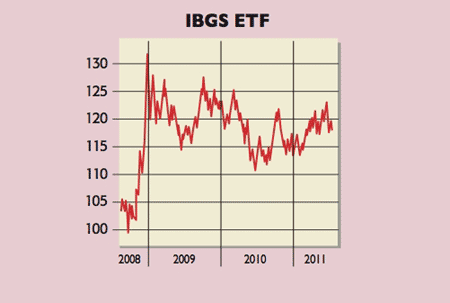
There are two main levels of risk you’re exposed to in an exchange-traded fund (ETF): one visible, one less so. As Europe’s financial strains intensify, you should pay attention to both.
The first type of risk relates to the make-up of the index your ETF tracks. Take ETFs investing in European government bonds. Your exposure to Europe’s perceived problem countries – a category that, with Italy and Spain now in the firing line, seems to be gaining members from one week to the next – depends very much on how the underlying index is structured. For example, iShares’ 1-3 year eurozone bond ETF (LSE: IBGS) has over 40% investment exposure to Italy, while Lyxor’s ETF EuroMTS 1-3 year (Paris: MTA) has a few per cent in Greek bonds.
This is not necessarily bad news – after all, the riskier the countries in the index, the more you’ll receive in yield. But you should be aware that country weightings can vary widely between funds with very similar-sounding names.
The second risk comes from the assets the ETF actually owns on a day-to-day basis. Synthetic (derivatives-based) ETFs own a basket of assets (or are pledged collateral) that may be unrelated to the index being tracked. ETFs using physical replication may lend out the shares or bonds in the index, also taking collateral in return. In a crisis, such as one involving the failure of the firm managing the ETF, or of the bank providing a derivatives contract to the fund, that could be what you’re left with. As a general principle, you’d want any ‘substitute’ assets or collateral to be of equal or superior quality to the shares or bonds of the index itself. Ideally, the substitute basket or collateral should also move in line with the index, to prevent a mismatch.
What you don’t want – and this is a risk regulators have focused on recently – is for your ETF to get stuffed full of illiquid junk if its sponsor bank gets into trouble.
So how can you monitor this? Issuers of physical ETFs give little information regarding the actual collateral taken in lending operations, though they do set out lending policies. Issuers of synthetic ETFs have been improving disclosure of fund assets/collateral, though some are more open than others. So, before you buy an ETF, check not only the index details but also what the actual fund assets are. If the eurozone crisis causes a breakdown, those could be crucial.
• Paul Amery edits
www.indexuniverse.eu
, the top source of news and analyses on Europe’s ETF and index-fund market.